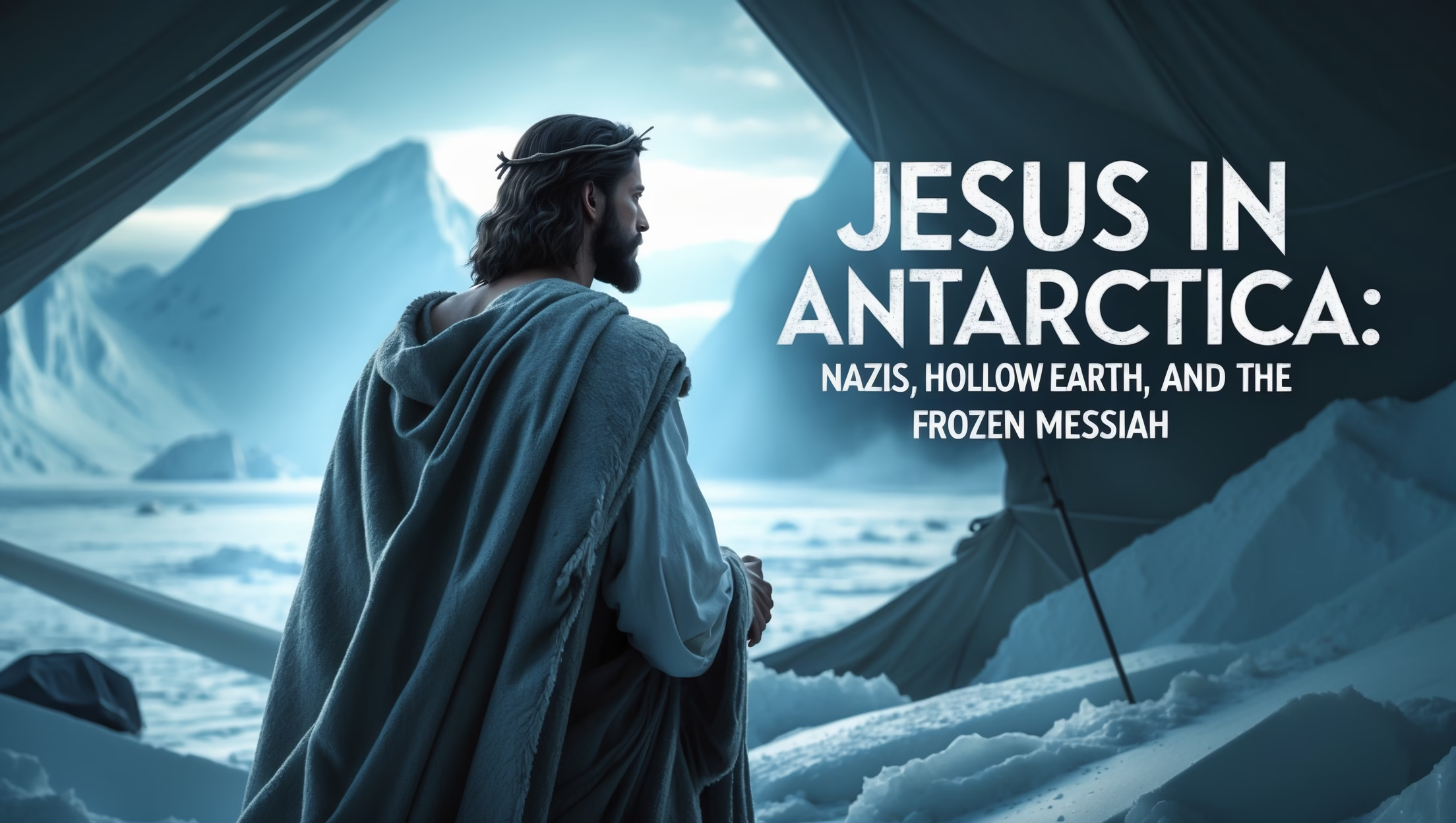Throughout history, Jesus has inspired countless interpretations, some devout, others bizarre. Among the most outlandish is the Antarctic Jesus legend, a fringe theory combining Nazi expeditions, Hollow Earth fantasies, and modern conspiracy culture. Though entirely rejected by mainstream scholarship, the myth persists, revealing humanity’s enduring fascination with reshaping the Christ story.
Nazi Obsession with the Frozen Messiah
In 1938, the Third Reich launched the German Antarctic Expedition under the guise of scientific research, but conspiracy theorists allege far darker motives. Some claim the Nazis sought hidden Aryan-Christian relics buried beneath Antarctica’s ice.
- Thule Society Maps: The esoteric society linked to early Nazi ideology reportedly circulated maps of alleged ancient Aryan colonies in polar regions. Some fringe researchers suggest these settlements contained secret knowledge connecting Jesus to pre-Christian European traditions.
- Operation Highjump (1947): Admiral Richard Byrd led the U.S. Navy’s largest Antarctic operation shortly after WWII. Conspiracy theorists cite his statement about encountering “flying discs” as evidence of post-Nazi exploration of hidden Antarctic technologies, sometimes linked to the search for a supernatural Christ figure.
While there is no credible evidence of any Nazi contact with Jesus-related artifacts in Antarctica, the stories persisted in Cold War-era speculative literature and became a staple of esoteric conspiracy communities.

Hollow Earth and the Frozen Messiah
Another strand of the Antarctic Jesus myth draws from Hollow Earth theory, popularized in the 19th and 20th centuries. Proponents claim a secret civilization exists inside the Earth’s polar regions, often populated by hyper-advanced beings. Within this narrative, Jesus is sometimes imagined as:
- A messianic figure preserved in ice, waiting to return.
- A teacher of hidden knowledge meant to guide humanity once the Hollow Earth is revealed.
- Symbolic representation of divine energy found at the planet’s poles, blending mystical and pseudo-scientific claims.
These fantastical interpretations have been bolstered by pop culture, including episodes of The X-Files, novels, and fringe documentaries, giving the Antarctic Jesus myth a surprisingly long lifespan.
Modern Conspiracies and Pop Culture
In the 21st century, the myth has evolved with technology:
- Melting glaciers: Some theorists claim satellite imagery reveals cross-shaped ice formations, suggesting Jesus’ presence beneath the ice.
- AI-generated claims: Tech figures, including Elon Musk in speculative social media posts, have been jokingly cited as detecting “Christ energy” at the South Pole, blurring the line between satire and conspiracy belief.
- Media influence: Shows like Ancient Aliens and social media videos have amplified the narrative, merging Cold War secrecy with digital-age mysticism.
These modern interpretations reflect a broader cultural tendency to project contemporary anxieties—about climate change, technology, and lost knowledge—onto religious figures.
Theological and Historical Reality
Scholars unanimously reject any notion of Jesus’ connection to Antarctica. Historical and archaeological evidence places Jesus entirely in 1st-century Palestine, with no credible accounts of travel beyond the Eastern Mediterranean. The Antarctic legend is best understood as myth-making: a creative exercise in cultural imagination rather than a claim with theological weight.
The fascination with a “Frozen Messiah” highlights several enduring themes:
- Human desire to locate the divine in extreme or unexplored spaces.
- Integration of esoteric ideology and religious figures, particularly during periods of sociopolitical upheaval.
- The flexibility of Christ’s image, able to embody anything from carpenter and teacher to cosmic or conspiratorial figure.
Why the Myth Persists
Despite its absurdity, the Antarctic Jesus story continues to circulate. Several factors contribute to its endurance:
- Mysterious geography: Antarctica’s remoteness and extreme environment naturally invite speculation.
- Historical secrecy: Nazi obsession with the occult and classified Cold War expeditions create fertile ground for imaginative connections.
- Pop culture reinforcement: Films, television, and internet forums legitimize the story in the eyes of believers or entertainment seekers.
- Psychological appeal: The idea of a hidden savior waiting to emerge resonates with human hopes for revelation, redemption, or ultimate justice.
In this sense, the Antarctic Jesus legend is less a claim about history and more a mirror reflecting humanity’s endless reinvention of sacred narratives.
Conclusion
From Nazi obsession to Hollow Earth fantasies and AI-generated modern claims, the Antarctic Jesus myth exemplifies how far cultural imagination can stretch sacred history. While entirely rejected by academics and theologians, it underscores a truth about Jesus’ cultural power: even 2,000 years after His life, humanity continues to project hopes, fears, and fantasies onto Him.
Whether frozen in ice, guiding lost civilizations, or energizing speculative tech narratives, Jesus in Antarctica reminds us that the figure of Christ transcends geography, history, and reason—becoming, in myth, a truly global and timeless symbol.










